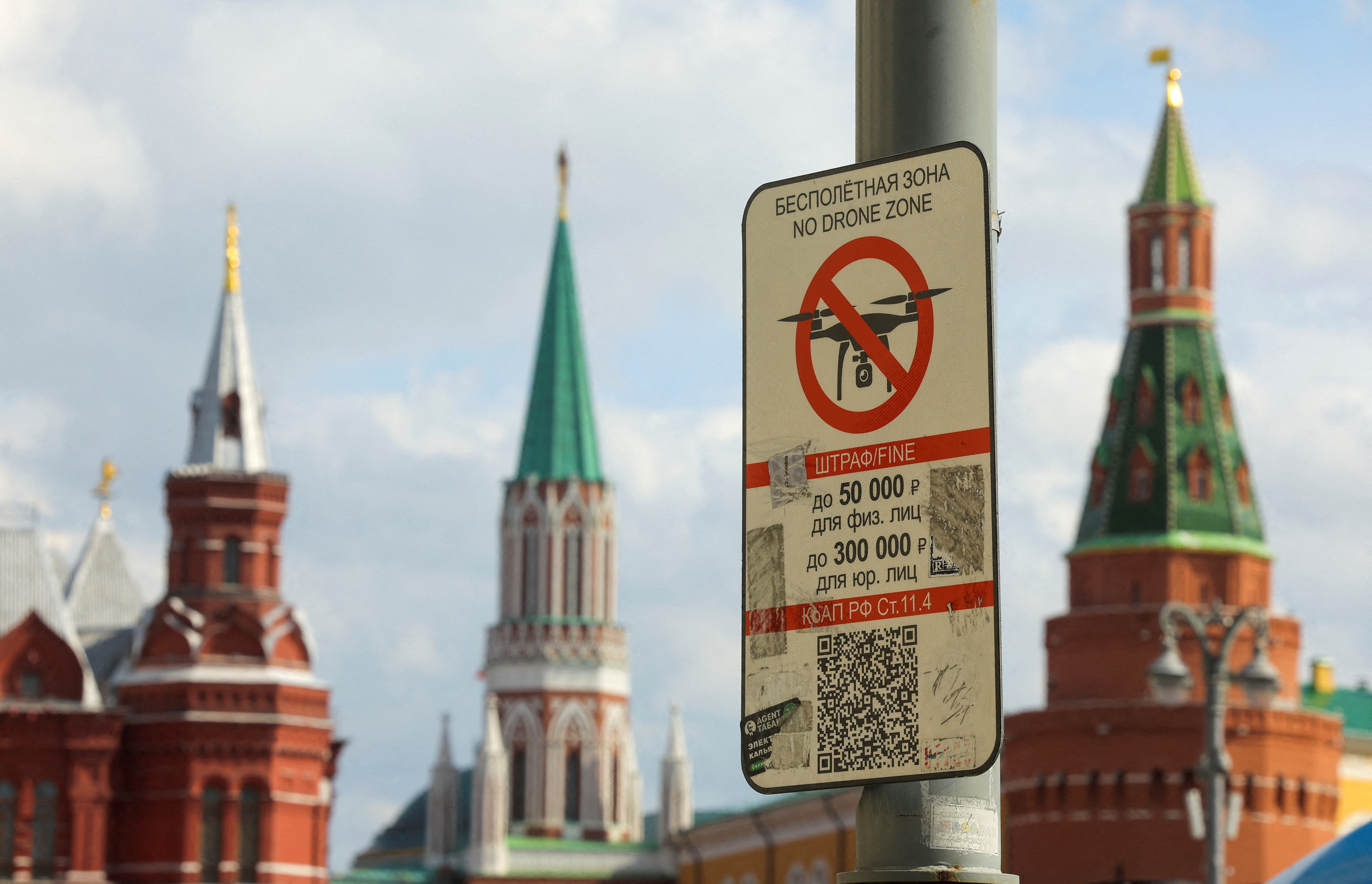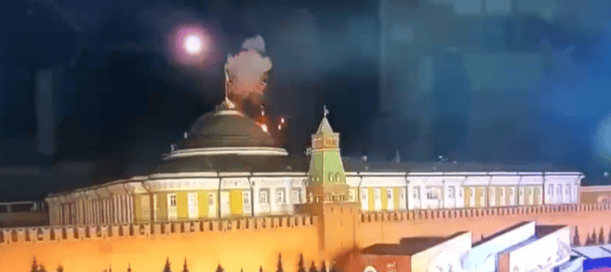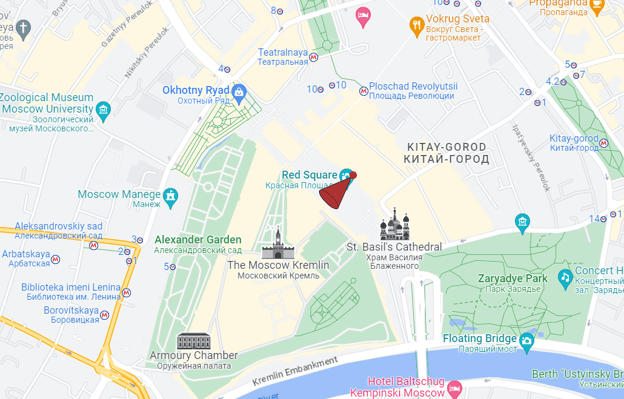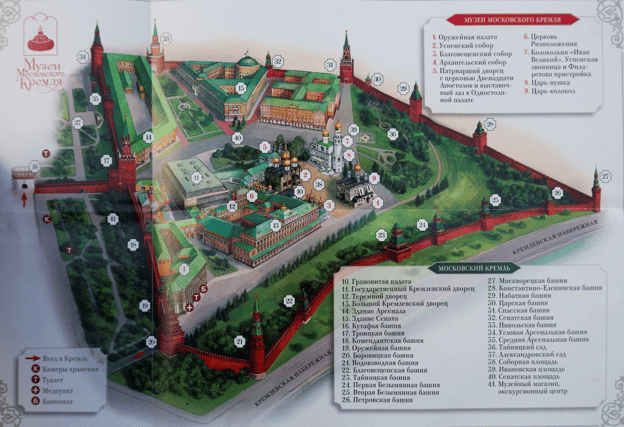By: praveen kumar h
May 5 2023
What we know about the drone attack in Russia

Image source: Reuters
Two drone attacks reportedly occurred at the Kremlin in the early hours of Wednesday, May 3, 2023, ahead of Russia’s Victory Day celebration and parade, scheduled for May 9. Reuters reported that a video showing a drone heading towards the Kremlin Senate building dome and subsequently exploding was shared on a Telegram channel with ties to Russia’s law enforcement agencies. Social media users shared similar videos across multiple platforms.

A still from the reported drone attack showing smoke coming from the dome of the Kremlin. Source: unverified Russian social media
The Russian reaction
Russia called the incident an attempt to "assassinate" Vladimir Putin, who they stated was not present in the Kremlin at the time of the attack. In a statement released 12 hours after the incident, Russia blamed Ukraine for the attack. Russian authorities stated they had disabled the drones, that there were no casualties, and that it considered the action "a planned terrorist attack and an assassination attempt targeting the President."
Former Russian President and Deputy Chairman of the Security Council of Russia Dmitry Medvedev said to Russian state media outlet TASS that there was no choice but to "physically eliminate" Ukraine’s President Zelenskyy "and his clique." On May 4, Kremlin spokesperson Dmitry Peskov accused the U.S. of coordinating with Ukraine to attack Moscow, adding, "We know very well that decisions about such actions, about such terrorist attacks, are made not in Kyiv but in Washington."
The Ukrainian response
Zelenskyy denied Russia’s accusation, adding, "We don’t attack Putin or Moscow. We fight on our territory. We’re defending our villages and cities." Mykhailo Podolyak, Zelenskyy’s presidential adviser, said Russia’s claims were a means "to justify massive strikes on Ukrainian cities, on the civilian population, on infrastructure facilities." Ukraine has also suggested Russia staged the attack to create this justification.
The U.S. denies involvement
On May 4, after Peskov’s accusation, the U.S. immediately denied involvement in the drone attack. National Security Council spokesperson John Kirby said, "I can assure you that there was no involvement by the United States. Whatever it was, it didn’t involve us." He also called it a "ludicrous claim." U.S. Defense Department spokesperson Lieutenant Colonel Garron Garn also reiterated this to Politico.
Was the residence attacked?
Russia’s claims that Putin’s Kremlin residence was attacked merit further scrutiny considering the trajectory of the drones. Logically Facts geolocated the drone footage to the area of Red Square noted on the map below.

A map showing the Kremlin and surrounding areas. Source: Google Maps
A more detailed Russian map of the Kremlin grounds below provides further insight upon cross reference. The drone footage shows it landing near the dome of the Senate Building (15: здание сената), which is near the Senate Tower (32: сенатская башия). The Grand Kremlin Palace (13: Большой Кремлёвский дворец), which is the official residence of the Russian President, is further south, 900 meters away.

A detailed Russian map of the Kremlin grounds, with numerical references to specific locations within. Copyright: Arthur Lookyanov/Moscow-Driver
Other geolocation analyses have confirmed the same. The corresponding time shown on the Kremlin clock in the videos shows that the first drone exploded at 2:27 a.m., resulting in a small plume of smoke. The second, more widely reported drone attack occurred 2:43 a.m., resulting in a larger blaze.
Are the motives behind the attack clear?
Some experts have speculated on the possible motives behind the attack, particularly if it was from Ukraine. The Financial Times quoted a senior Western defense official, stating, "Ukraine’s previous attacks using unmanned vehicles also show how hard it can be to defend against those strikes."
Furthermore, Ukraine has not claimed responsibility for prior attacks in Crimea, including a recent drone attack on a Russian fuel storage facility in the Crimean port of Sevastopol on April 29, 2023.
Analysts and experts are divided on who is likely responsible for the attack and its potential motives. James Nixey, director of the Russia and Eurasia program at the Chatham House think-tank, told AP News that "if it was a warning shot by Kyiv, then it was "yet another shocking security lapse by the Russian state," and "if it’s a false flag operation by Moscow, then it reeks of desperation. And it’s a high-risk strategy likely to be exposed, considering how poor their tradecraft seems to be."
Mark Galeotti, a British expert on Russia, tweeted that it is unlikely the attack targetted Putin because he "notoriously rarely goes to the Kremlin, let alone stays there overnight, and there were no scheduled early morning meetings or the like there which might make one assume he might be in his (palatial) flat there," which is "quite well protected," according to his understanding.
Lieutenant General Scott Berrier, Director of the U.S. Defence Intelligence Agency, said the drones were not big enough to do "significant damage to the Kremlin." The New York Times reports that leaked U.S. intelligence documents allegedly showed that Ukraine’s GUR military intelligence agency planned to carry out a series of strikes on Moscow, but Zelenskyy rejected the idea.
Currently, the motive for the attack remains unclear, with Ukraine and the U.S. both denying involvement. It is possible, given different geolocation reports that appear broadly in agreement with each other, that this may have been staged by Russia, but for now, everything remains speculative.


